You are here: Foswiki>Dmi Web>SummerSchool2009>ThePlaceOfIssues (29 Oct 2012, ErikBorra)Edit Attach
The Place of Issues (according to their edits and editors)
- The Place of Issues (according to their edits and editors)
- Research Question
- Methods and Findings
- Global Warming Wikipedia Network
- Network Topology: Article Activity
- Network Topology: Article Activity Over Time
- Issue Composition: Debates and Displacements
- Editors and their Issues: Top editors in the Global Warming network
- Bot Dependency in the Global Warming Network
- Bots and their Issues: Top bots in articles related to Global Warming
Research Question
The research inquires into the composition of issues on Wikipedia by contributors, and consequences for the (possibility) of carrying out public debate and controversy. Using link analysis, we mapped a network (or ecology) of articles surrounding Global Warming, and performed further analysis on a number of significant articles within it. In particular, we were interested in activity measures for highlighting where in the network debates (might) take place, as well as activity measures over time, in order to discover whether debates had moved from one article to another. Additionally, we were interested in the issue commitments of individual editors - the various Wikipedia contributors highly active within the larger Global Warming network. Do editors stick to a single article, or do they have preferred sets of articles? Such preferences would perhaps make it possible to 'profile' articles within the larger network, and offer a way to track the movement of debates across articles. Might the activity of a group of editors across a number of articles indicate a coordinated effort, or perhaps a particular distribution of the debate?Methods and Findings
Global Warming Wikipedia Network
Method- Scrape the article 'Global Warming' for bi-directional links within Wikipedia (articles that both link to 'Global Warming' and are linked back to by it).
- Scrape each of the resulting URLs for links to Wikipedia articles, outputting relational database.
- Visualize with ReseaLu, highlighting articles used in further analysis.
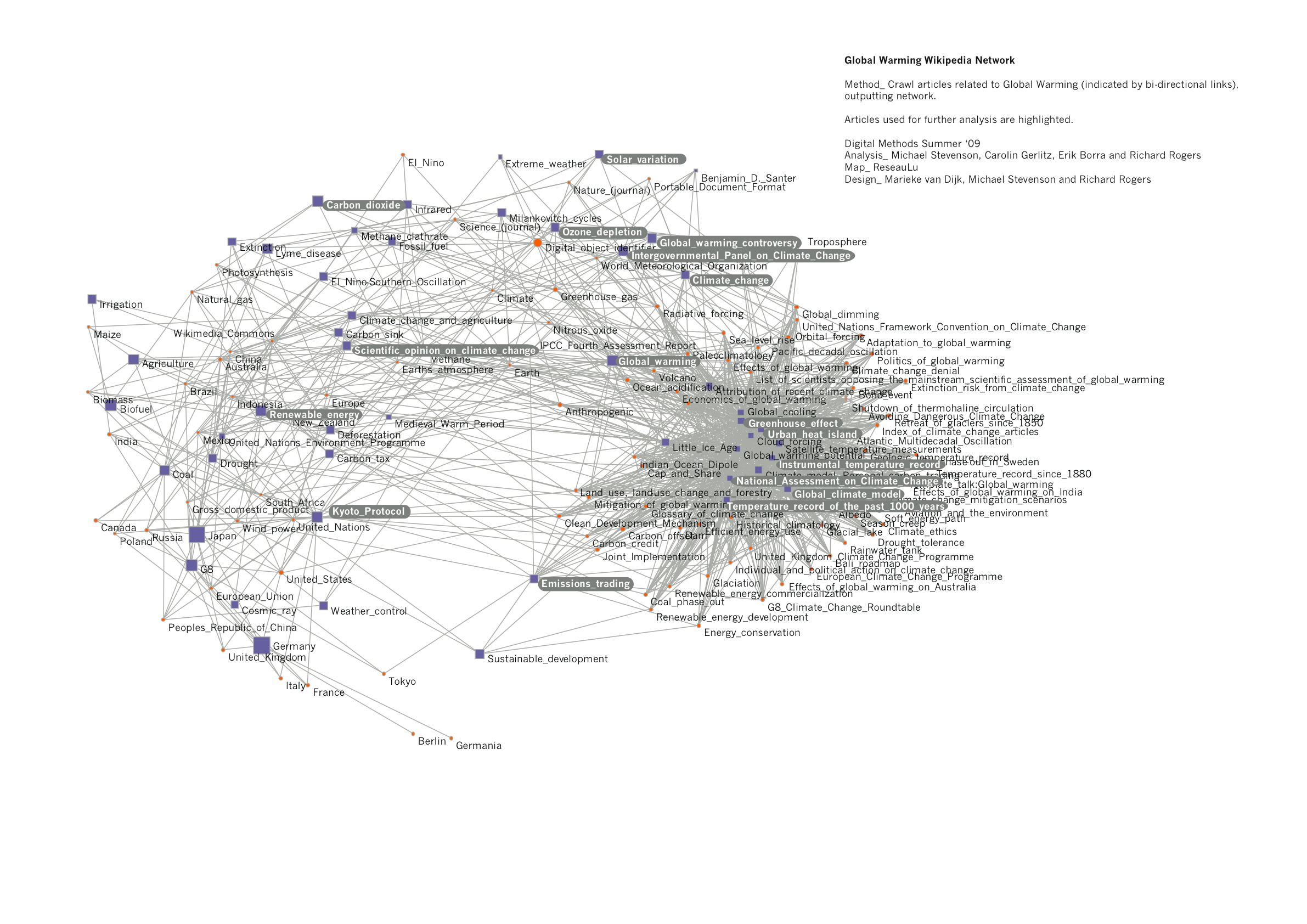
Network Topology: Article Activity
QuestionHow is activity (in terms of the number of edits) distributed within the network? Method
For the analysis, we chose a sample of 16 articles strongly linked to the entries on Global Warming and Global Warming Controversy. The total number of edits per article were tallied, outputting an indication of the distribution of article activity within the network. Findings
As may be expected, activity is distributed unevenly within the network, with the articles Global Warming, Kyoto Protocol and Global Warming Controversy being edited the most.

Network Topology: Article Activity Over Time
Question How have levels of activity changed over time, and what relationship may these have with Wikipedia's approach to dealing with debate and controversy? MethodFor each article, tally number of edits per month from November 2001 to July 2009. Findings
In first instance, the visualization appears to indicate generic Wikipedia editing trends, such as the overall increase over the years, or the relative decrease in activity in the months of June and December, as well as an 'incubation' period between an article's creation and its maturation, with initial editing and a period of inactivity followed by more regular editing. More importantly for the analysis at hand, however, the heat map may be used to signal significant moments in Wikipedia's 'management' of the issue of Global Warming. For example, the high levels and subsequent decline of activity for the Global Warming and Global Warming Controversy articles in the first half of 2007 correspond to edit wars and the 'protection' of both articles (where protection refers to varying degrees of disallowing edits). Meanwhile, the creation of the article Scientific Opinion on Climate Change in September 2003 was followed by a decline in activity in the articles Global Warming and Climate Change. This event, in which it could be said that controversy was effectively managed and displaced, is explored below.

Issue Composition: Debates and Displacements
Question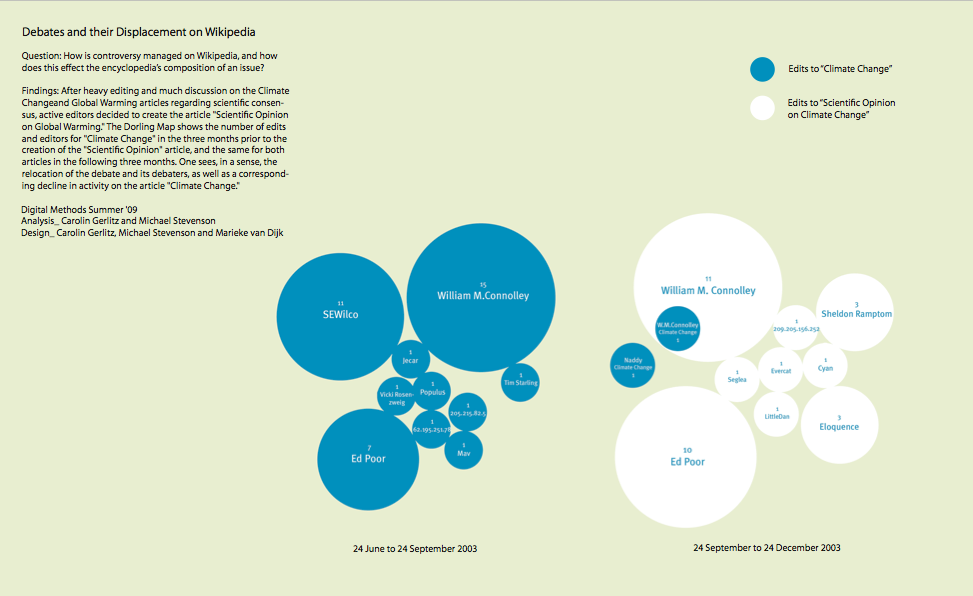
Editors and their Issues: Top editors in the Global Warming network
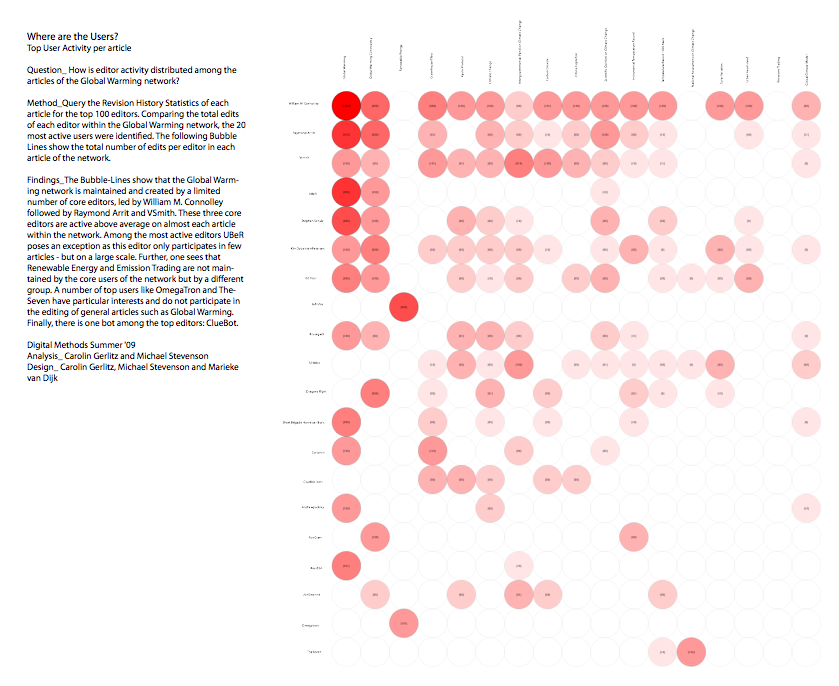
Bot Dependency in the Global Warming Network
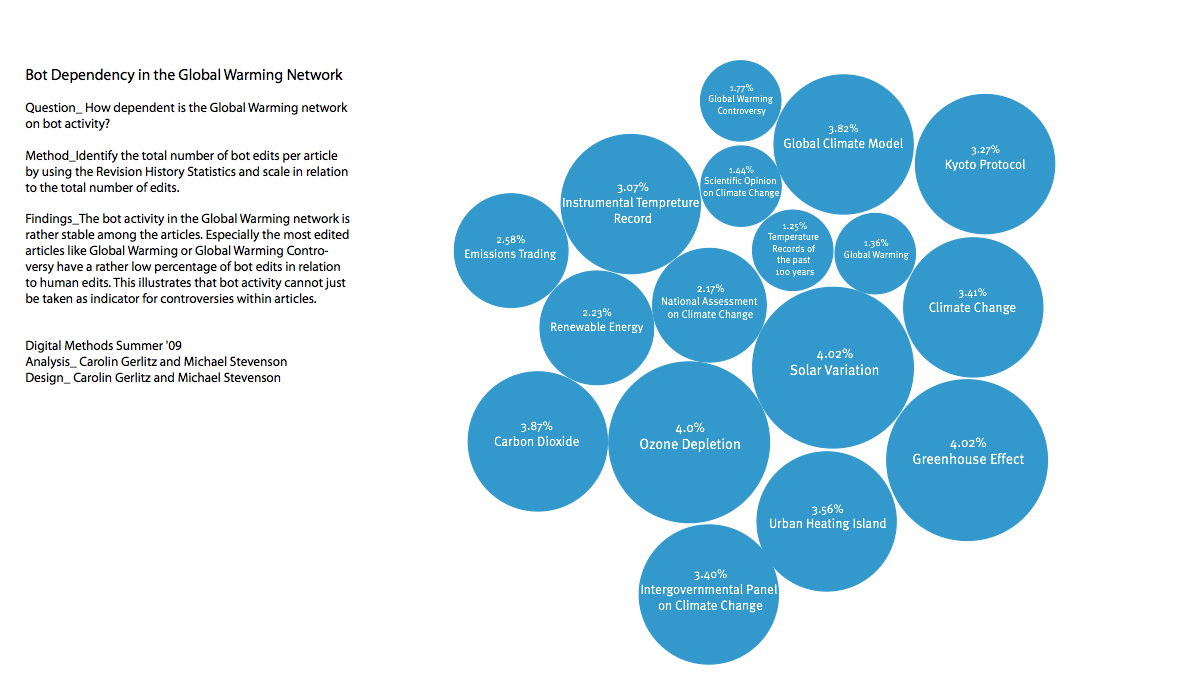
Bots and their Issues: Top bots in articles related to Global Warming
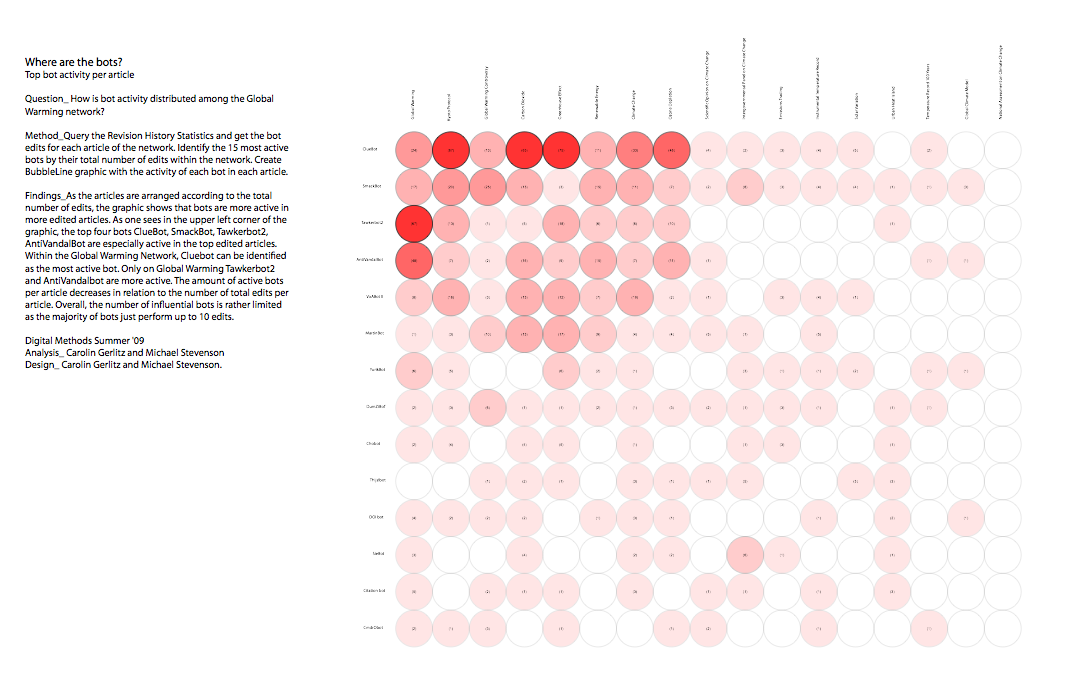
Edit | Attach | Print version | History: r18 < r17 < r16 < r15 | Backlinks | View wiki text | Edit wiki text | More topic actions
Topic revision: r18 - 29 Oct 2012, ErikBorra
 Copyright © by the contributing authors. All material on this collaboration platform is the property of the contributing authors.
Copyright © by the contributing authors. All material on this collaboration platform is the property of the contributing authors. Ideas, requests, problems regarding Foswiki? Send feedback


